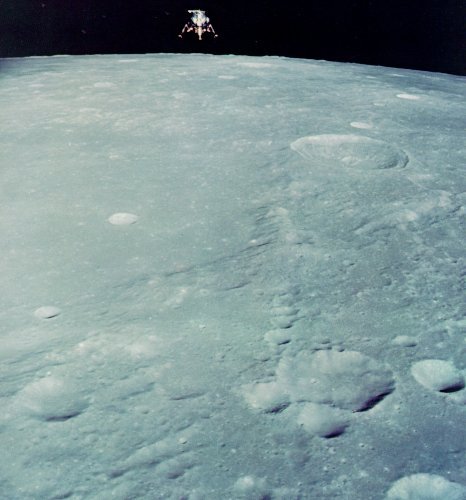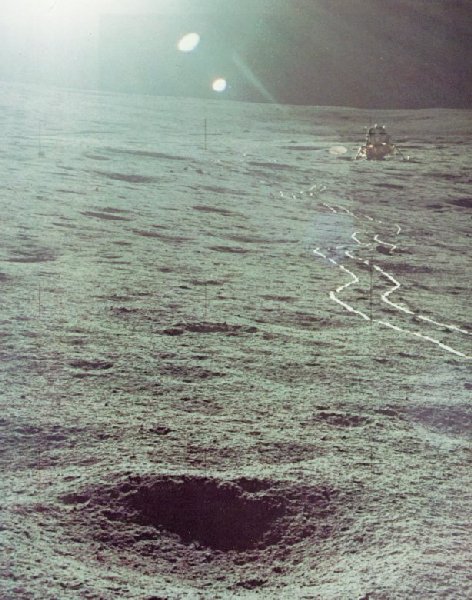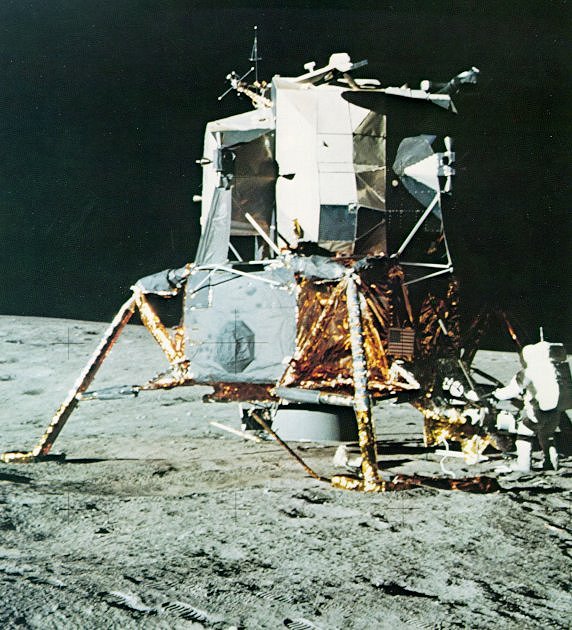















|

|
| Going its separate way for a landing, the Apollo 12 Lunar Module Intrepid gleams in the sunlight as it pulls ahead of Yankee Clipper, the command module. The view is westward, from a circular orbit 69 miles above the surface, with Intrepid very nearly as high. With the Sun above and behind the camera, the very rough lunar terrain below appears greatly subdued. The circular crater in the middle distance on the right is Herschel. The smooth-floored giant crater Ptolemaeus occupies much of the area to its left. |

|
| Tire tracks trace the path of the Apollo 14 astronauts from their lunar module Antares to the site, some 200 yards to the west, where they set up the Apollo Lunar Surface Experiments Package (ALSEP). On this mission, they had a two-wheeled, light, hand-pulled cart (shown here) to carry their equipment and samples. The Modular Equipment Transporter, or MET, had pneumatic tires, which compacted the soil as they rolled. In this photo, taken in the direction of the Sun, the tracks are brightly backlighted. In general, however, where astronauts worked, the soil scuffed up by their boots was distinctly darker than the undisturbed surface material. |

|
| Astronaut Alan Bean unloads equipment from the Apollo 12 lunar module Intrepid in preparation for the walk to the ALSEP site. The lunar module-surely the clumsiest-looking flying machine ever built-consisted of a descent stage, destined to remain on the Moon, and an ascent stage that later carried the crew and sampies into lunar orbit. Scientific equipment and gear for use an the lunar surface was stowed in four bays of the descent stage. The panel that covered the bay facing Bean folded down to provide a work table. |


